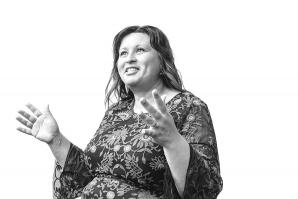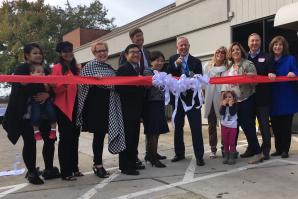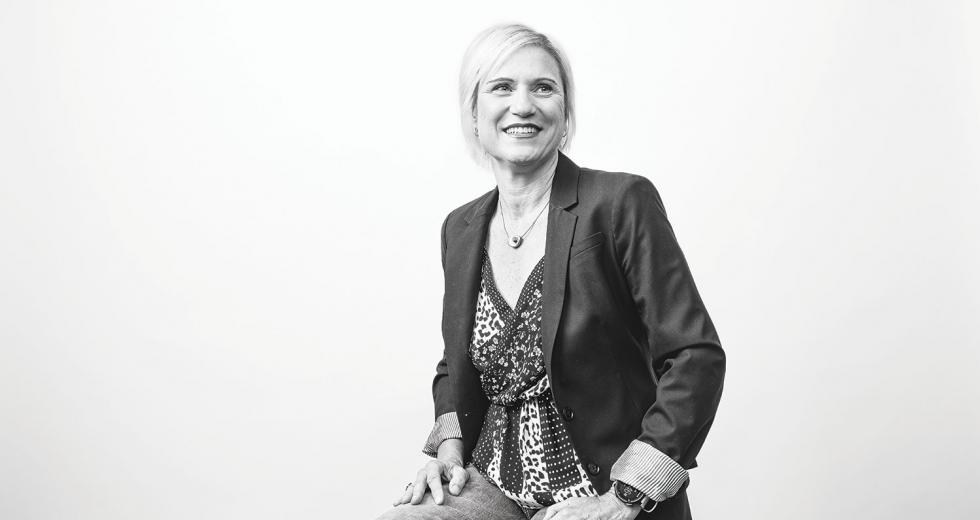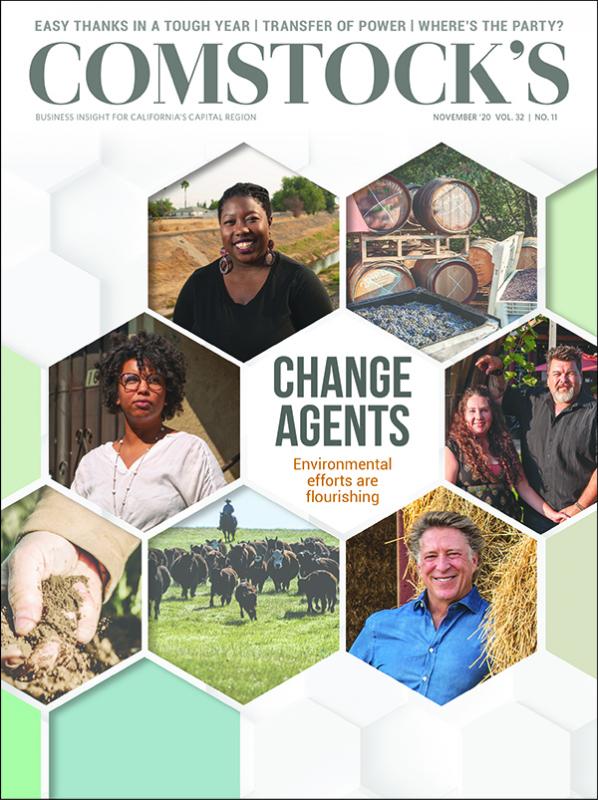Julie Hirota became CEO of Saint John’s Program for Real Change in April. Founded in 1985, Saint John’s is Sacramento’s largest residential program for women and children who have experienced homelessness. For the first part of her career, Hirota worked as an engineer, but over the past decade, she has worked for nonprofits. In recent years, she was the chief operations officer at UC Davis’ Biomedical Engineering department, executive director of California CareForce and CEO for Blue Line Arts in Roseville. Comstock’s spoke to Hirota about leading the organization, which has helped more than 30,000 women and children during its 35-year history.
You’ve been in the job now for about six months. What were your immediate goals for the nonprofit, and what are some longer-term plans?
My immediate goal was to make sure I understood the lay of the land: Who have been the supporters of Saint John’s in the community, who our partners are, who all of our board members are, who our donors are and why they support Saint John’s. … My other goal was to create a plan for fiscal sustainability. (In terms of fiscal sustainability), we are on pretty solid footing. I’ve understood and lined up what kind of contracts we have that are renewable, either foundational contracts or government contracts.
I’ve also executed a staffing plan. We’re just starting to look at how our fundraising goals need to meet the gap between the funding that we already receive and the funding we need to produce our programs. … I’m looking at what other social-enterprise models might make sense for Saint John’s and those that would create both vocational training for women as well as revenue-generating opportunities.
Saint John’s work is made possible by the involvement of volunteers. How has the pandemic affected their involvement?
We have over 400 volunteers that help us support the organization, and we’ve had to cut that down to less than probably two dozen (for safety reasons). … We’ve had to do less because of it. For instance, some of our programming that we’ve offered on the weekends (such as yoga) we’re not offering right now because volunteers would run a lot of our enrichment programs.
We’re hoping we can get to a place where it’s safe to bring volunteers back again so we can expand to provide and deliver the things we had.
How many women and children do you currently serve, and what is your capacity?
We have 240 beds, and right now we’re probably at about 70 percent capacity. (The reason) we’re not completely full is because we have done a much slower intake than in the past because of the quarantine process. We may have like 10 women leaving the program in one week, but then we’re only bringing in two. We have to stage them, and we put them in a quarantine area, and we watch them, and so it’s a slower introduction to coming in.
Saint John’s is a comprehensive residential program that addresses the root causes and symptoms of homelessness (and houses people for up to 18 months). How does the organization’s model differ from other strategies to address homelessness?
We take our residents to cross the finish line. There are a lot of wonderful programs in the region. (Some) are emergency shelters that are needed right now. Some of those programs focus maybe on (serious emotional disturbance) recovery programs. Some of the programs are a 90-day shelter to provide immediate relief. Our program really is about taking women who have been through some of the other programs and have gotten to a position where they’re ready to make changes in their life.
That’s how we’re different, because when homeless people come into a shelter or they’re seeking housing, they don’t necessarily want to go in the same direction as the women at Saint John’s. The women in Saint John’s make a commitment to sobriety. They make a commitment to do a very robust training program — which includes vocational training, parenting, going through a lot of mental health (counseling) and therapies — one, to take on their addiction and get past that, but also to heal a lot of the wounds that have been created in their past. … The women that come in our program need to be willing to take on the challenge (to) reinvent themselves.
Saint John’s provides numerous services for women and children. What are the primary services that women and children need now, and how has that changed over time?
What we’re seeing a lot more of is women coming in due to domestic violence, and children are coming in out of abusive situations. The other thing is substance abuse. The rise of COVID and the shelter-in-place (order) and everybody’s ability to really interact in a way they have been able to before — also the numerous job layoffs that have occurred — have really put everybody in a very different position, and I think there’s a lot of depression going on. That depression has created a lot of fear and anxiety and abuse, unfortunately. So that’s where the focus is right now. I don’t think there’s enough mental health solutions in the world right now to tackle what everyone’s going through, especially our homeless population.
In terms of what our children need right now … they need education. They need to go back to school. If you look at a homeless child who might be living along the river in a tent or finding just different places to live day by day, and when they have a school to go to, that’s a place for them to be. That’s a place for them to have lunch. It’s a place for them to have other trusted adults in their life. It’s a place for them to escape violence. It’s a place for them to escape (drugs) and alcohol and abuse. We don’t have that now. We’re doing homeschooling, and our kids, because they are at the shelter, they do have a place to go. We’ve created a classroom environment for them.
One of the primary goals of Saint John’s is to transition women from being homeless to having jobs in the workforce. How has this been impacted by COVID-19 with more unemployment and fewer jobs?
Our major vocational training program is Plates Cafe (and Plates Midtown); it’s a restaurant (program with two locations in Sacramento; both closed due to the coronavirus pandemic). … So we have shifted our vocational training to our catering platform. The women are still learning the same vocational skills in a way, but they’re missing that customer-service interface because they’re mostly doing catering projects.
The other way it’s affected them is some of the folks got laid off right away. After we train them through vocational training, we help them seek job opportunities outside of the organization for a full-time job so that they can earn a livable wage and move out of Saint John’s and get their own housing. Some of them lost their jobs because they were laid off or the businesses closed or there was a workforce reduction. That brought them back on the campus and needing to search for another job, and the job search is just a little bit slower now. There are still many success stories with our women finding positions, but it’s also a little bit harder than it used to be.
What is the role of private industry when it comes to addressing the issue of homelessness?
One, of course, is making contributions and prioritizing their contributions toward supporting programs like ours, programs that are really strong rehabilitative programs. … You know it’s an economic impact also. … By reinvesting in programs like ours, it’s creating a stronger workforce. It’s getting people out of homelessness. It’s improving our housing situation all around.
I think CEOs and other business leaders would benefit by really learning about some of the root causes of homelessness and become part of our think tank and solutions.
We like to have a lot of tours with people. Because when people come and see the women and the children and who they really are, and it’s not just some video clip of what’s going on down by the river, they get to meet the people, and they get to understand why they’re there — it’s not out of reluctance to go to work. It’s things that have happened so long ago that have had such a big effect on these people that it … becomes a lifelong pathway. I think CEOs and other business leaders would benefit by really learning about some of the root causes of homelessness and (becoming) part of our think tank and solutions.
Is there anything else you would like to add?
It would be an understatement to say I’m grateful to have found my life’s work. It’s a remarkable place. The women and the children, their capabilities are amazing. It’s beautiful to watch them transform from coming in without much confidence — and the one thing they have with them is the willingness to do the program — and then to see them go through the program and be successful and get a job and experience all the wins along the way. … A win could be that they’re successful in a reunification with their children. A win could be they have gotten through an entire week without any substance abuse. A win could be they got a driver’s license.
I think we’ve got a lot more work to do. We’ve got a lot of work to do because homelessness is a problem that is getting bigger, it’s getting more complicated. The resources are still very limited. … We have almost a 1-to-1 ratio of moms to kids, which means we’ve got to help the kids and give them the tools so they don’t end up in the cycle of poverty as well. So that’s where our real opportunity is. That’s kind of the final thing in my leadership with Saint John’s … investing in our kids and finding ways to make life-lasting impact and giving them the tools so that they can be successful, just like their moms are.
–
Stay up to date on business in the Capital Region: Subscribe to the Comstock’s newsletter today.
Recommended For You

Community Connections
Sacramento Hispanic Chamber of Commerce President and CEO Cathy Rodriguez Aguirre on the resiliency of the Latino business community
Comstock’s spoke with Rodriguez Aguirre about SHCC and how it has worked to meet the needs of its members during the pandemic.

Systems for Success
How to build your marketing approach without making it formulaic
Whether your business relies on tried-and-true methods like billboards, commercials, sponsorships, local print advertising and mailers, or digital ones like social media channels, email marketing, Facebook promotions and Google ads, your marketing needs a system.

Building the Way Home Through Innovation
HomeAid Sacramento leads the building and renovation of dignified shelter homes for the homeless in the Sacramento region
HomeAid Sacramento in Roseville is addressing the age-old problem of homelessness by serving as a facilitator between the regional homebuilding industry, and homeless shelter and service providers.




